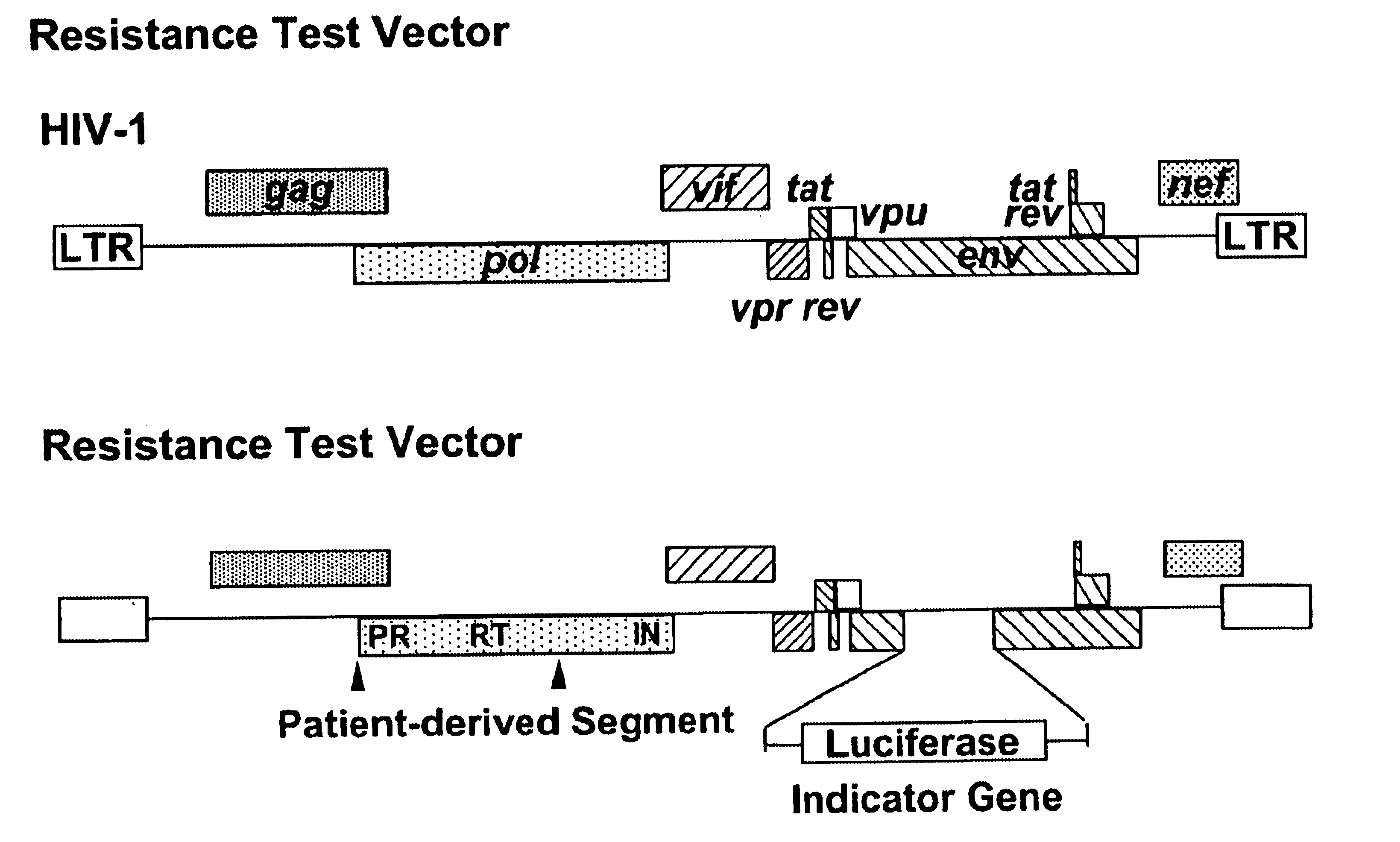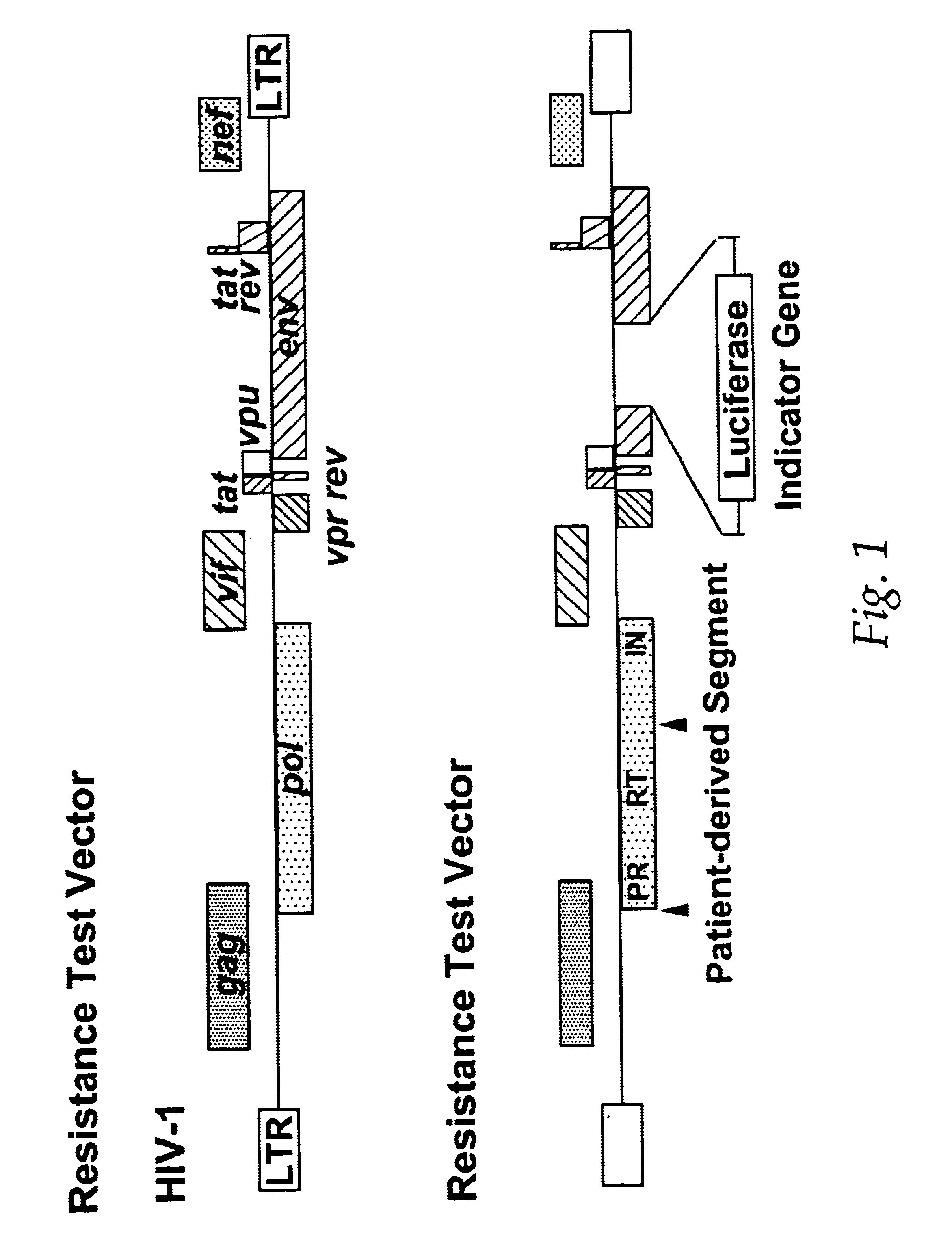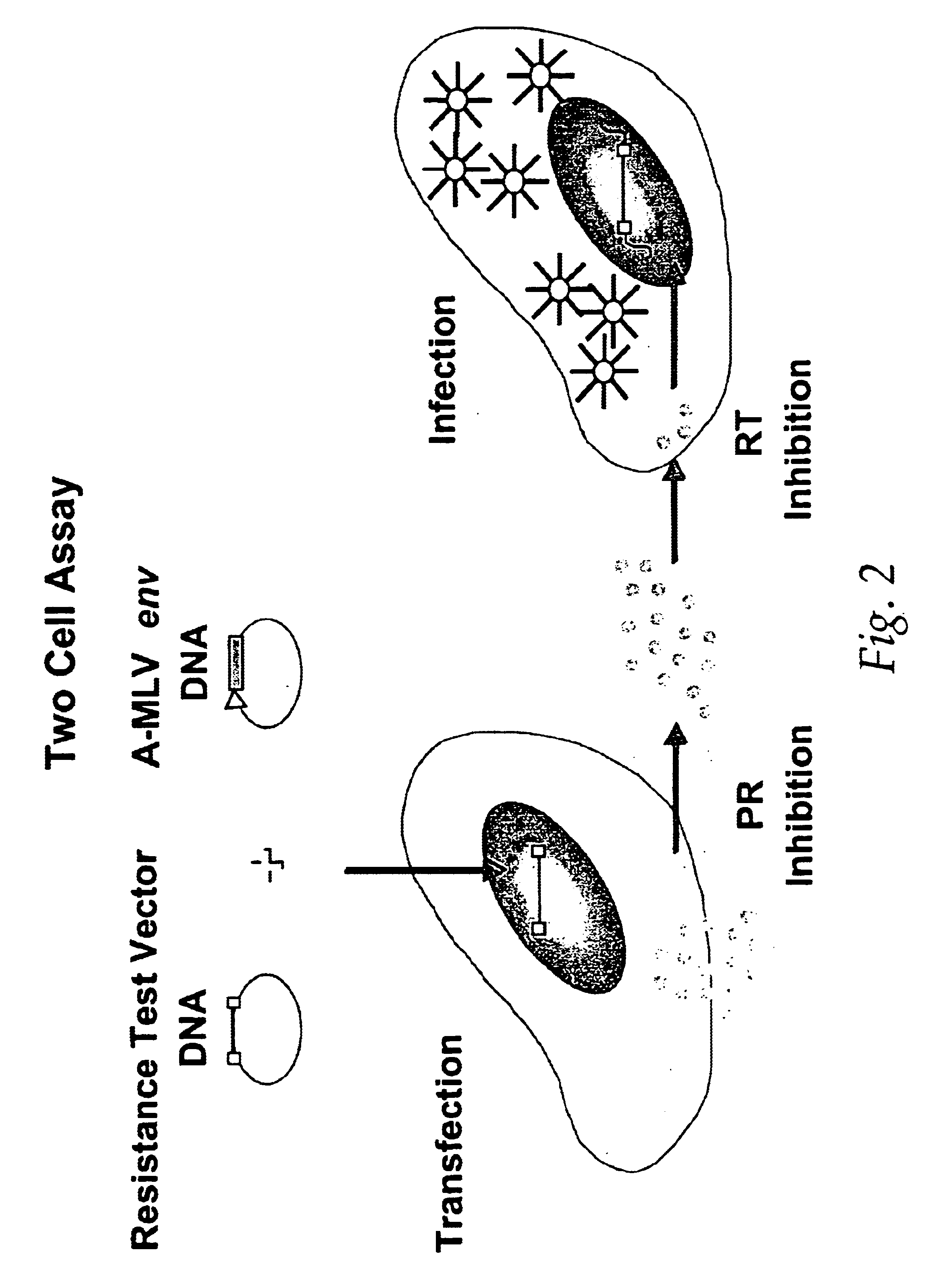Means and methods for monitoring non-nucleoside reverse transcriptase inhibitor antiretroviral therapy and guiding therapeutic decisions in the treatment of HIV/AIDS
a reverse transcriptase inhibitor and antiretroviral therapy technology, applied in the field of antiretroviral drug susceptibility and resistance tests, can solve the problems of small proportion of the total viral load, low tolerability of drug regimens, and inability to detect cd4 depletion and disease progression, and achieve anti-hiv drug susceptibility, decrease in nnrti anti-hiv susceptibility, and the effect of determining the susceptibility o
- Summary
- Abstract
- Description
- Claims
- Application Information
AI Technical Summary
Benefits of technology
Problems solved by technology
Method used
Image
Examples
example 2
Correlating Phenotypic Susceptibility and Genotypic Analysis
Phenotypic Susceptibility Analysis of Patient HIV Samples
[0091]Resistance test vectors are constructed as described in example 1. Resistance test vectors, or clones derived from the resistance test vector pools, are tested in a phenotypic assay to determine accurately and quantitatively the level of susceptibility to a panel of anti-retroviral drugs. This panel of anti-retroviral drugs may comprise members of the classes known as nucleoside-analog reverse transcriptase inhibitors (NRTIs), non-nucleoside reverse transcriptase inhibitors (NNRTIs), and protease inhibitors (PRIs). The panel of drugs can be expanded as new drugs or new drug targets become available. An IC50 is determined for each resistance test vector pool for each drug tested. The pattern of susceptibility to all of the drugs tested is examined and compared to known patterns of susceptibility. A patient sample can be further examined for genotypic changes corr...
example 3
Correlating Phenotypic Susceptibility and Genotypic Analysis: P225H
Phenotypic Analysis of Patient 97-302
[0094]A resistance test vector was constructed as described in example 1 from a patient sample designated as 97-302. This patient had been treated with d4T, indinavir and DMP-266 for a period of approximately 10 months. Isolation of viral RNA and RT / PCR was used to generate a patient derived segment that comprised viral sequences coding for all of PR and aa 1-313 of RT. The patient derived segment was inserted into a indicator gene viral vector to generate a resistance test vector designated RTV-302. RTV-302 was tested using a phenotypic susceptibility assay to determine accurately and quantitatively the level of susceptibility to a panel of anti-retroviral drugs. This panel of anti-retroviral drugs comprised members of the classes known as NRTIs (AZT, 3TC, d4T, ddI and ddC), NNRTIs (delavirdine and nevirapine), and PRIs (indinavir, nelfinavir, ritonavir, and saquinavir). An IC50 ...
example 4
Correlating Phenotypic Susceptibility and Genotypic Analysis: P236L
Phenotypic Analysis of HIV Patient 97-268
[0097]A resistance test vector was constructed as described in Example 1 from a patient sample designated 97-268. This patient had been treated with AZT and 3TC (NRTIs), indinavir and saquinavir (PRIs) and delavirdine (an NNRTI) for periods varying from 1 month to 2 years. Isolation of viral RNA and RT / PCR was used to generate a patient derived segment that comprised viral sequences coding for all of PR and amino acids 1-313 of RT. The patient derived segment was inserted into a indicator gene viral vector to generate a resistance test vector designated RTV-268. RTV-268 was then tested using the phenotypic susceptibility assay to determine accurately and quantitatively the level of susceptibility to a panel of anti-retroviral drugs. This panel of anti-retroviral drugs comprised members of the classes known as NRTIs (AZT, 3TC, d4T, ddI and ddC), NNRTIs (delavirdine and nevirapi...
PUM
| Property | Measurement | Unit |
|---|---|---|
| resistance tests | aaaaa | aaaaa |
| non-nucleoside reverse transcriptase inhibitor resistance | aaaaa | aaaaa |
| resistance | aaaaa | aaaaa |
Abstract
Description
Claims
Application Information
 Login to View More
Login to View More - R&D
- Intellectual Property
- Life Sciences
- Materials
- Tech Scout
- Unparalleled Data Quality
- Higher Quality Content
- 60% Fewer Hallucinations
Browse by: Latest US Patents, China's latest patents, Technical Efficacy Thesaurus, Application Domain, Technology Topic, Popular Technical Reports.
© 2025 PatSnap. All rights reserved.Legal|Privacy policy|Modern Slavery Act Transparency Statement|Sitemap|About US| Contact US: help@patsnap.com



